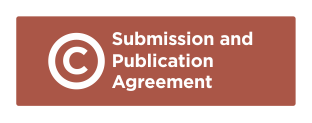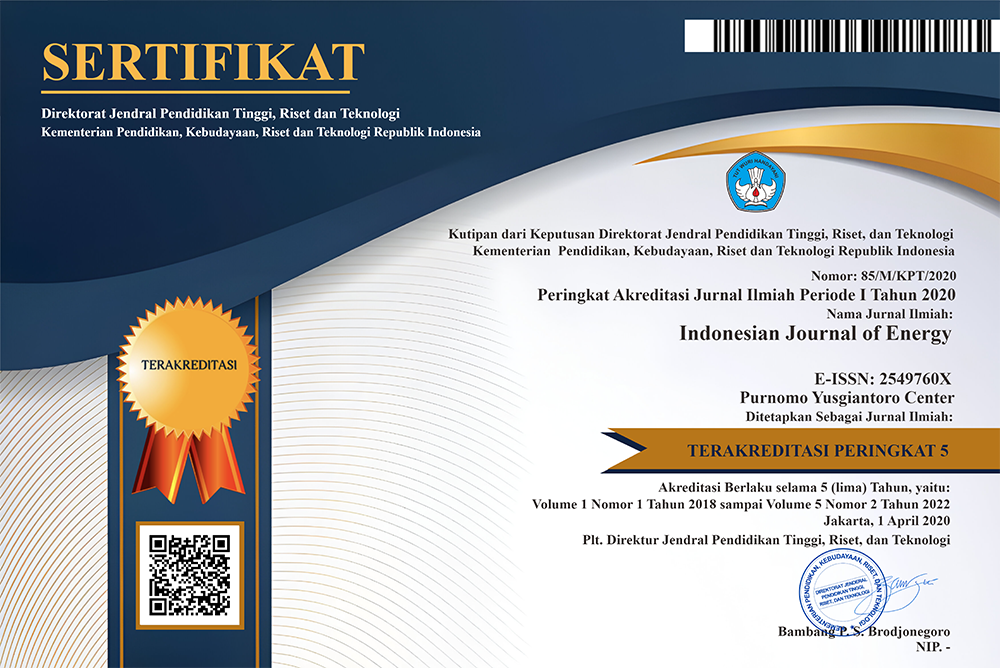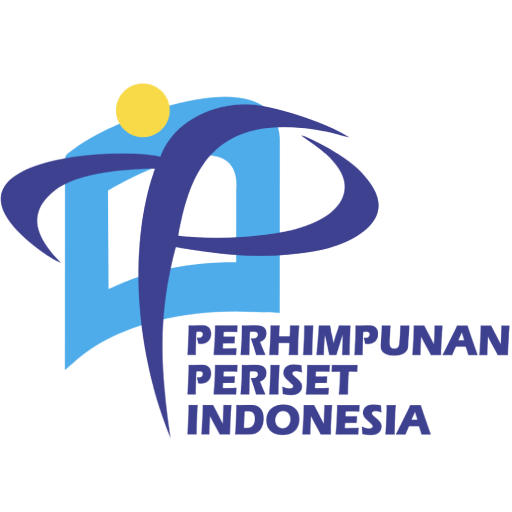Solar Enhanced Oil Recovery as the Solution to Enhance Oil and Gas Production for Mature Fields in Indonesia
Abstract
Indonesia has a target of reducing 29% of GHG emissions by 2030 (NDC, 2022), reaching net-zero emissions in 2060 (LTS-LCCR, 2021), and obtaining 1 million BOPD oil production and 12 BSCFD gas production in 2030. Oil and gas companies have particular challenges to achieve the target in line with paying attention to national energy security despite the oil reserve and production declining since 1995 because of the maturity of the fields. In such a case, the enormous amount of remaining oil in place left by the primary and secondary production stages has led to the EOR method as the best way to improve oil production. In Indonesia's mature fields with specific reservoir conditions, steamflooding is currently a highly effective EOR method to increase oil production by 20–300% and reduce viscosity by up to 98%. However, the production of steam in huge quantities conventionally would require vast amounts of fossil fuel resources. Hence, replacing fossil fuel-derived steam with solar-derived steam would solve the twin problems of energy scarcity and greenhouse gas emissions. Solar EOR is a viable alternative to gas-fired steam production for the oil industry by using the sun's energy to generate steam. For designing the long-term Solar EOR, Ayman Solar Concentrator (ASC) technology on low-cost solar thermal energy storage will generate high-temperature steam for 24 hours all day by enabling the system to achieve higher temperatures with less mirror surface. The evaluation of annual energy output from the solar project's design could save more than 8,672,400 MMBTU/year of natural gas and cut the environmental footprint up to 1200 metric tonnes per day of net CO2 so that natural gas can be sold and allocated to various sectors. Furthermore, the economic analysis shows that solar EOR has the lowest operational. This technology's novelty is its low cost and ability to generate steam to supply it upon demand in Indonesia's ongoing steamflood project.
Downloads
References
Ahmed, A. M. (2021). UAE-based startup Wahaj Solar aims to produce low-cost solar power that can be used across an array of applications. Entrepreneur Middle East.
Al-Maaitah, A. (2020). Utilization of the innovative A.S.C. technology for 24/7 solar enhanced oil. SPE-202893-MS.
Al-Maaitah, A. (2020). Utilization of the innovative A.S.C. technology for 24/7 solar enhanced oil. Society of Petroleum Engineers.
Al-Maaitah, A. (2022). Design & demonstration of a 10-meter metallic reflector-based Fresnel lens, with lower focal point fixed to the ground. AIP Conference Proceedings.
Bae,W.S., A. M. (2017). EOR in Indonesia: Past, present, and future. International Journal of Oil Gas and Coal Technology.
Boerema, N., Morrison, G., Taylor, R., & Rosebgarten, G. (2012). Liquid sodium versus hitec as a heat transfer fluid in solar thermal central receiver sy. Solar Energy, 86(9), 2293–2305.
Boretti, A., & Al-Maaitah, A. (2021). Hydrogen production by solar thermochemical water-splitting cycle via a beam down concentrator. Frontiers in Energy Research.
Brandt, A. R., Unnasch, S. (2010). Energy intensity and greenhouse gas emissions from thermal enhanced oil recovery. Energy Fuels.
Cahyono, A. E. (2012, March 14). Biaya "cost recovery" diusulkan US$15,16 miliar - dalam APBN-P. Neraca Harian Ekonomi. https://www.neraca.co.id/article/11247/biaya-cost-recovery-diusulkan-us1516-miliar-dalam-apbn-p
Candra. (2022). Ini dia peta jalan transisi energi menuju nol karbon.
CFI Team. (2022). Levelized cost of energy (LCOE): The average total cost of a project per unit of total electricity generated. CFI. https://corporatefinanceinstitute.com/resources/valuation/levelized-cost-of-energy- lcoe/
Dwidevy, A. (2017). Steam generation by solar and natural gas generators for thermal enhanced oil recovery.
Dwivedy, A. (2017). Steam generation by solar and natural gas generators for thermal enhanced oil recovery. West Virginia University.
ESDM. (2021). Handbook of energy & economic statistics of Indonesia.
F. J., A. (1967). Scanning the business environment.
Fernando, J. (2022). Internal rate of return (IRR) rule: Definition and example. Investopedia. https://www.investopedia.com/terms/i/irr.asp
Global Carbon Project. (2022). Analysis: Global CO2 emissions from fossil fuels hit record high in 2022. Carbon Brief.
Gupta, S., Guedez, R., & Laumert, B. (2017). Market potential of solar thermal enhanced oil recovery-a techno-economic model for Issaran oil field in Egypt. AIP Conference Proceedings.
IEA. (2022). Global CO2 emissions rebounded to their highest level in history in 2021.
IEA. (2023). Clean energy investment is extending its lead over fossil fuels, boosted by energy security strengths.
International Energy Agency. (2022). An energy sector roadmap to net zero emissions in Indonesia. IEA.
International Renewable Energy Agency. (2012). Concentrating solar power. IRENA.
IPCC. (2018). Global warming of 1.5°C. CNBC .
IRENA. (2020). Renewable energy statics.
J.J., T., F.D., M., & Seright, R. (n.d.). EOR screening criteria revisited— Part 1: Introduction to screening criteria and enhanced recovery field projects. SPE Res Eng 12.
Jan-Rudolf-Eggers, M. v. (2022). Design and performance of a long duration electric thermal energy storage demonstration plant at megawatt-scale. Energy Storage.
Julyus, S. I. (2018). The new energy management policy: Indonesian PSC- gross-split applied on steam flooding project. IOP Conference Series: Earth and Environmental Science.
Kementerian Energi dan Sumber Daya Mineral. (2022). Permen ESDM 35/2021 dukung pencapaian produksi migas 2030. www.esdm.go.id
Kementerian Koordinator Bidang Perekonomian Republik Indonesia. (2023). Pemerintah terus mendorong percepatan transisi energi di dalam negeri guna mencapai target net zero emission pada 2060.
Leong, J. K. (2022). Steamflood Project.
LTS-LCCR. (2021). Indonesia long-term strategy for low carbon and climate resilience 2050.
UNFCCC. https://unfccc.int/sites/default/files/resource/Indonesia_LTS-LCCR_2021.pdf
McKinsey. (2021). The big choices for oil and gas in navigating the energy transition.
Mehreen, A. (2021, September 28). UAE-based startup wahaj solar aims to produce low-cost solar power that can be used across an array of applications. Enterpreneur. https://www.entrepreneur.
com/en-ae/entrepreneurs/uae-based-startup-wahaj-solar-aims-to-produce-low-cost/387988
Michael, C. (2020). Khalifa University’s Masdar Institute solar platform installs UAE’s first-of-a-kind solar concentrator at Masdar City. Khalifa University.
Ministry of Energy and Natural Resources. (n.d.). Kebijakan, regulasi, dan inisiatif pengembangan energi surya di Indonesia.
Nahhas, T., Py, X., & Sadikin, N. (2019). Experimental investigation of basalt rocks as storage material for high-temperature concentrated solar power plants. Renewable and Sustainable Energy Reviews, 110, 226-235.
NDC. (2022). Enhanced nationally determined contribution Republic of Indonesia. UNFCC. https://unfccc.int/sites/default/files/NDC/2022-09/ENDC%20Indonesia.pdf
Reuters, T. (2023). Glossary: Discount rate. Practical Law. https://content.next.westlaw.com/Glossary/
PracticalLaw/I6d0564ec909811ebbea4f0dc9fb69570?transitionType=Default&contextData=(sc
Reyseliani, N., Pratama, F., & Purwanto, W. W. (2020). Simulation and levelized cost analysis of direct use geothermal energy for enhanced oil recovery. Engineering Journal.
SKK Migas. (2019). Laporan tahunan 2019: Meningkatkan investasi menuju produksi 1 juta bopd. https://www.skkmigas.go.id/assets/ar-skk-migas- 2019-indo-rev-170702020
Solargis. (2020). Global photovoltaic power potential by country. Global Solar Atlas.
Subiyantoro, G. (2010). Post steam reservoir characterization in Duri steam flood. Indonesia Petroleum Association.
Taber, J.J., e. a. (n.d.). For screening criteria revisted - part 2: applications and impact of oil process. Society of Petroleum Engineers.
UNFCC. (2016). Confirmation of Paris Agreement. UNFCCC.
United Nations. (2015). Sustainable Development Goals.
Wang, W. Q. (2019). Optical efficiency improvement of solar power tower by employing and optimizing. Energy Convers.
Williams, D. (2014). Assessing the cost and performance of solar tower technology in South Africa. CSP Today.
Winderasta, W., Amlan, M. H., & Paksi, W. R. (2021). Duri steam flood fluid contacts study: redefining oil water contacts and intraformational top seals. Join Convention Bandung (JCB) 2021. PT Pertamina Hulu Rokan.
World Energy Outlook. (2020). The oil and gas industry in energy transitions. IEA.
















